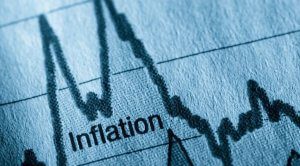 The tab is coming due for the eye-popping public spending of the past year, writes Jack Mintz in the Financial Post. Below is an excerpt from the article which can be read in full here.
The tab is coming due for the eye-popping public spending of the past year, writes Jack Mintz in the Financial Post. Below is an excerpt from the article which can be read in full here.
By Jack Mintz, May 26, 2021
As the COVID recession winds down, the tab comes due for the eye-popping public spending of the past year. One of those payments is the inflation tax, which is already a reality in the United States. With Wednesday’s news that Canada’s year-over-year inflation rate is 3.4 per cent, we aren’t far behind.
In April, the U.S. consumer price index rose by 0.8 per cent on a seasonally adjusted basis. That’s almost 10 per cent annualized. April may well be an aberration so let’s look at the last four months. With the U.S. rolling out its vaccination program and lifting many health restrictions, its CPI rose 0.3 per cent in January, 0.4 per cent in February and 0.6 per cent in March. Add in April and the overall CPI increase is 2.2 per cent in just four months. That’s an annualized six and half per cent.
On the other hand, at the end of April the U.S. year-over-year inflation rate was just 4.2 per cent – more than in Canada but less than 6.5 per cent. This lower rate includes the pandemic months last spring, however, when prices fell sharply for some critical goods, especially energy and housing. Even taking into account this catch-up effect, the trend is up in 2021 and at far more than the two per cent annual rate that monetary authorities would like to see.
The Federal Reserve Board is willing to tolerate a surge in prices so long as inflation eventually moderates – though how long moderation takes is an open question. A common view is that it will kick in as the US$1.9-trillion Biden stimulus dissipates and supply catches up to overheated consumer and public demand. So far, the market seems to believe that. The 10-year Treasury inflation-protected bond rate suggests that investors expect inflation to be 2.52 per cent annually.
***TO READ THE FULL ARTICLE, VISIT THE FINANCIAL POST HERE***




